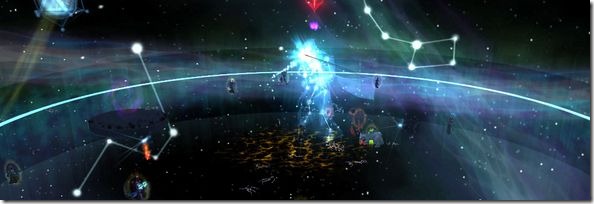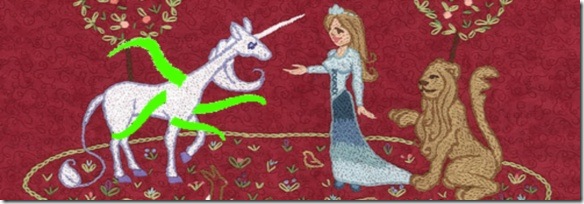There’s been a press release announced just minutes ago and if you want to skip the news, then you’ll want to skip out on this.
Personally, I think the loss of Path of the Titans and Guild talent trees were done mostly to shave off development time. Either that, or it just wasn’t working out quite well as the developers had hoped.
Path of the Titans – Gone!
- Path of the Titans has been scrapped and will not be implemented.
- Instead Blizzard will focus on improving the glyph system, as they feel it didn’t quite hit the intended goals in Wrath.
- Glyphs will now be available in 3 categories: Major, "Medium" (PH name) and Minor.
- Major glyphs are core to each class and will be expected to be used to perform at maximum level.
- Medium glyphs will be to provide "fun" alterations to abilities.
- Minor glyphs will largely function as they do today.
- Based on the mockup shown, you’ll be able to have 3 glyphs of each type at level 85: Major, Medium and Minor.
- The glyph UI will now display all of the glyphs available to your class, even if you haven’t learned them yet, to the right of the section where you apply your glyphs.
- Blizzard wants to make glyphs permanent so you don’t have to carry a stack of them around. Simply learn the glyph and then you can swap it whenever you want.
I’m a little disappointed by this largely because I think Path of the Titans had so much potential for the game. Instead, what is going to happen now is that the current glyph system is going to see some additions. Another layer of glyphs means additional customization options for our characters. I liked the idea of going out on some journey to explore and discover ruins that fell under the deity that I followed.
As for the glyph, I’m curious as to what is meant by “fun” alterations. Perhaps something like this?
Major: Prayer of Healing heals an additional 20% of its initial heal over 6 seconds.
Mild: If a target hit by Prayer of Healing gets healed to full, your spellpower is increased by 5% for the next 9 seconds
Minor: Raiditude no longer requires Candles.
It also sounds like Scribes are finished.
Guild talent system – Gone!
Guild Leveling
- There are 25 levels in total.
- Guild talents are not going to be implemented.
- Instead, guilds will be automatically rewarded with perks.
- Each time a guild levels up they will receive a perk.
- Guilds gain experience through a member participating in dungeon or raid boss kills, winning rated battlegrounds, completing quests or unlocking guild achievements.
Other than the removal of talents, there is nothing new here. It sounds like eventually, every guild will have access to the same number of perks. I’ve got some mixed feelings on this a bit largely because guild talents were another way for GMs to set their guild apart. On the other hand, it also meant that guilds could either be PvE or PvP guilds, and not necessarily both which ran contrary to their philosophies on accessibility.
I’m contemplating a pros and cons post with the rest of the WoM crew here about that very topic.
When I see the word “perk”, my brain shifts to Call of Duty mode. Oh well. No changes to the method by which guilds can gain experience.
Guild Rewards
- Guild currency has been scrapped.
- Guild rewards will be unlocked by completing guild achievements.
- Rewards will be purchased with gold, and anyone in the guild can purchase the reward once it’s unlocked.
- Examples: mounts, tabards, heirlooms.
- Guild mounts will have a flag attached to them that displays the guild’s emblem.
I suppose we’ll be using guild bank money to make the appropriate financial decisions. Riding around a Gryphon with our guild emblem on a flag does sound kind of cool though. Guild rewards sound like another way for guilds to set theirs apart from others. What’s unique is that guild rewards aren’t technically considered raid progression or anything like that. Actually, we won’t know until we know what the achievements actually are yet.
One possible unforeseen side effect? Gold farmers won’t just be selling WoW gold or accounts anymore. Selling guild names and achievements could be another product we’ll be seeing on the virtual black market.
Guild Reputation
- This is a newly announced feature; players will gain reputation with their guild similar to how other reputations work in the game.
- As you contribute to the guild by completing quests, killing bosses, winning rated BGs or completing guild achievements, you will gain reputation.
- The best guild rewards will require having exalted reputation with your guild.
- Guild reputation is on a per-character basis, so you’ll have to gain rep for each character you have in the guild before you can buy rewards with it.
- Reputation is not wiped immediately upon leaving or being removed from the guild; this is to prevent losing all your progress in the guild due to someone jokingly kicking you.
Years ago, players that signed on to join my guild were informed that they would have to grind Matticus rep. Now it appears it is a reality.
This does give incentive to players to actually do stuff in the guild so that everyone benefits as a whole.
Guild Achievements
- These will be integral to the reward and level systems. Completing one can unlock rewards as well as give the guild experience.
- Guild achievements are earned and owned by the guild, so once it has it, it never goes away — even if all members who participated leave the guild.
- Even classic raids will help level your guild. A new version of the classic raid meta will become available that guilds can complete.
- When viewing a guild achievement it will display the members who participated in earning that achievement.
- To earn a guild achievement you must have 7 of 10 or 20 of 25 players in the raid be members of your guild.
- There will be realm first achievements for guilds, as well as individual players.
Just when I thought I would never have to go back to take down C’Thun again. Looks like I may have to do it again just for the guild achievement and guild perk.
Guild Window
- The guild UI has received an overhaul and contains:
- The guild xp bar and its current level.
- An RSS-like feed of the latest news for the guild; boss kills, level milestones, etc.
- Some news like major raid boss kills or level 85 will be "sticky" (this is determined by Blizzard) and will persist at the top of the feed for a while.
- An upcoming events section that is a snapshot of your guild’s calendar.
- The most recent perk the guild has earned, and the one for reaching the next level.
- The guild reputation bar (this is specific to your character).
- The guild roster page has also been overhauled and now contains a professions display for each member.
- You will be able to click on profession icons and view the recipes a guild member has, even while they’re offline.
What would be cool is if this guild information can be parsed and echoed into blogs and other areas. Great tool with which we can show off what our guilds have done. The ability to inspect and view what guild members can craft has been a long time coming.
All in all, I’m not completely let down by the announcement. After thinking about it and examining it more from other angles, it sounds like the ideas are still there. It’s just the methodology that will end up being different.
How about you guys? Not happy with the loss of Path of the Titans or Guild Talent points?
Edit: On a completely unrelated note, I’m currently looking for an Elemental Shaman, or a Holy Pally for my guild. Even if you’re not the class or spec but would still like to raid, go ahead and apply anyway.

